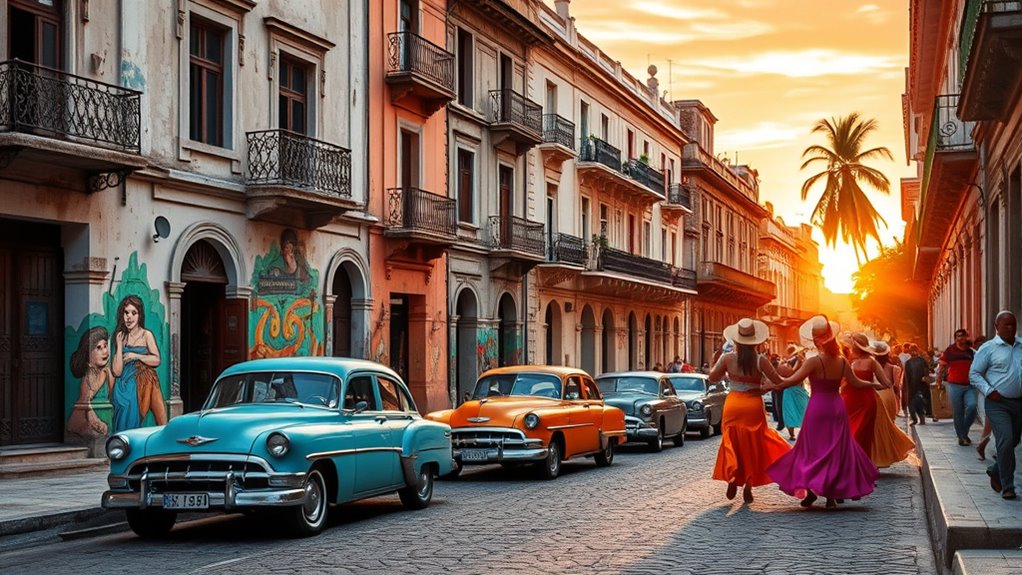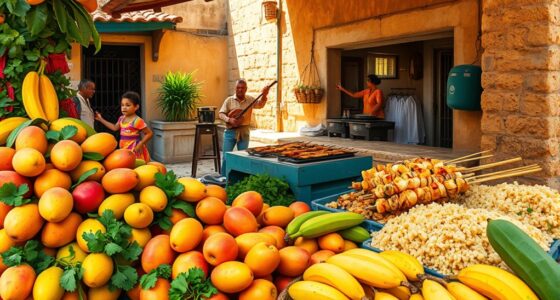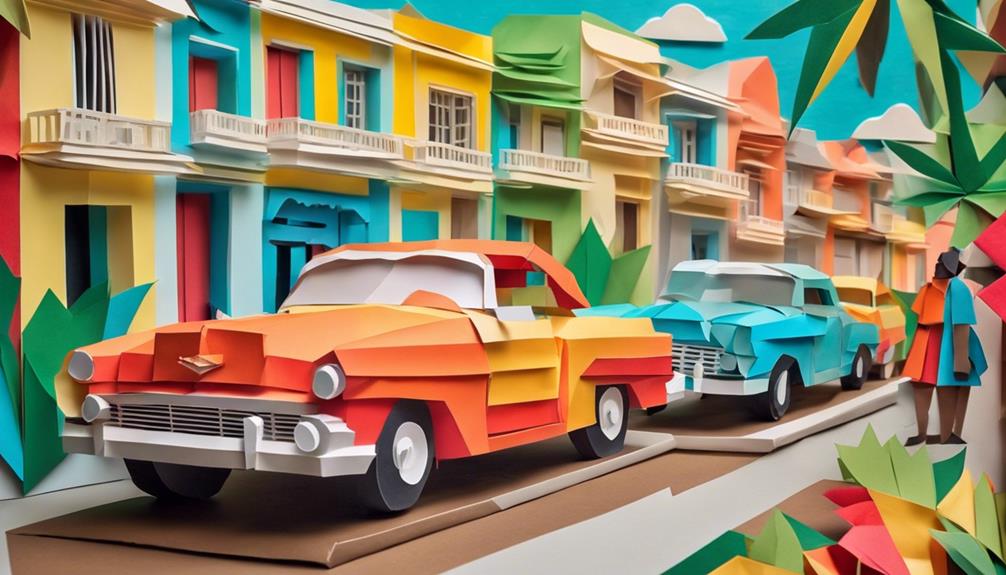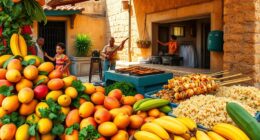Cuba’s history is rich, beginning with the Taíno people before Columbus arrived in 1492, leading to Spanish colonization and African influence. You’ll find a story of struggles for independence, revolution under Fidel Castro, and Cold War tensions with the U.S. shaping its modern identity. Its vibrant culture blends African, Spanish, and indigenous roots through music, dance, and religion. If you explore further, you’ll uncover how these layers continue to influence Cuba today.
Key Takeaways
- Cuba’s history is shaped by Taíno roots, Spanish colonization, and independence struggles, culminating in the 1959 revolution led by Fidel Castro.
- The island’s culture blends African, Spanish, and indigenous influences, evident in music, dance, religion, and festivals.
- Spanish contact introduced new crops, animals, and enslaved Africans, profoundly impacting societal development and cultural diversity.
- Cold War tensions, including the Cuban Missile Crisis, influenced Cuba’s political landscape and its close ties with the Soviet Union.
- Cultural preservation is evident through murals, literature, and community celebrations that honor Cuba’s rich heritage and social history.
Pre-Columbian Roots and Early European Contact
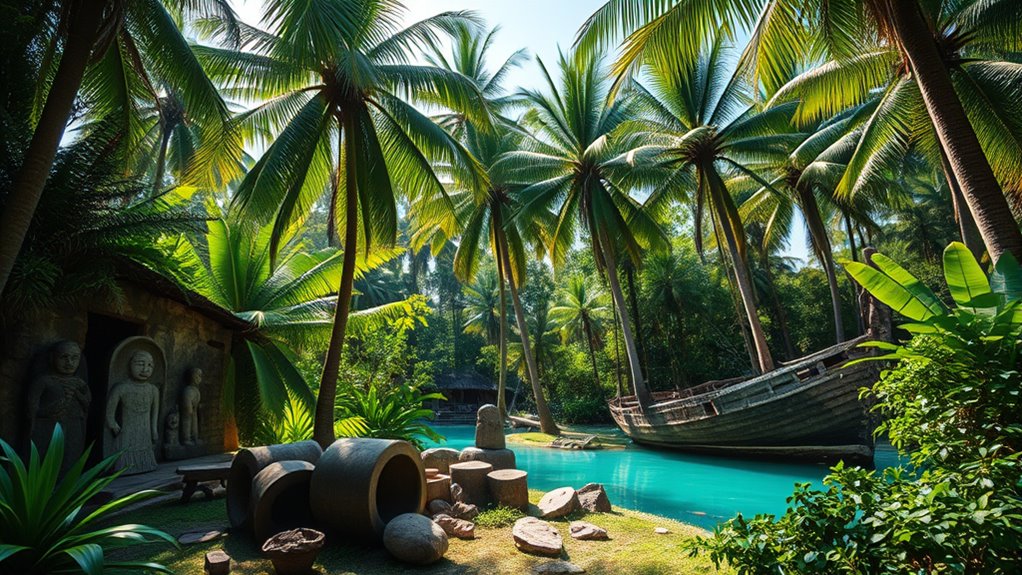
Long before Europeans arrived, the island of Cuba was inhabited by the Taíno people, an indigenous group that had settled there around 1200 CE. They thrived through fishing, farming, and crafting tools from local resources. The Taíno developed complex social structures, practiced agriculture, and created vibrant art and pottery. When Christopher Columbus arrived in 1492, he claimed Cuba for Spain, marking the start of European contact. The Spanish introduced new crops, animals, and, tragically, African slavery, which would reshape Cuba’s society. The Taíno population declined rapidly due to diseases, warfare, and forced labor. Despite their decline, their cultural influence persisted, blending with Spanish and African traditions to form the foundation of Cuba’s diverse heritage. Additionally, the impact of colorful art and pottery reflects the rich cultural expressions of the Taíno people that continue to influence Cuban art today.
Struggles for Independence and U.S. Influence
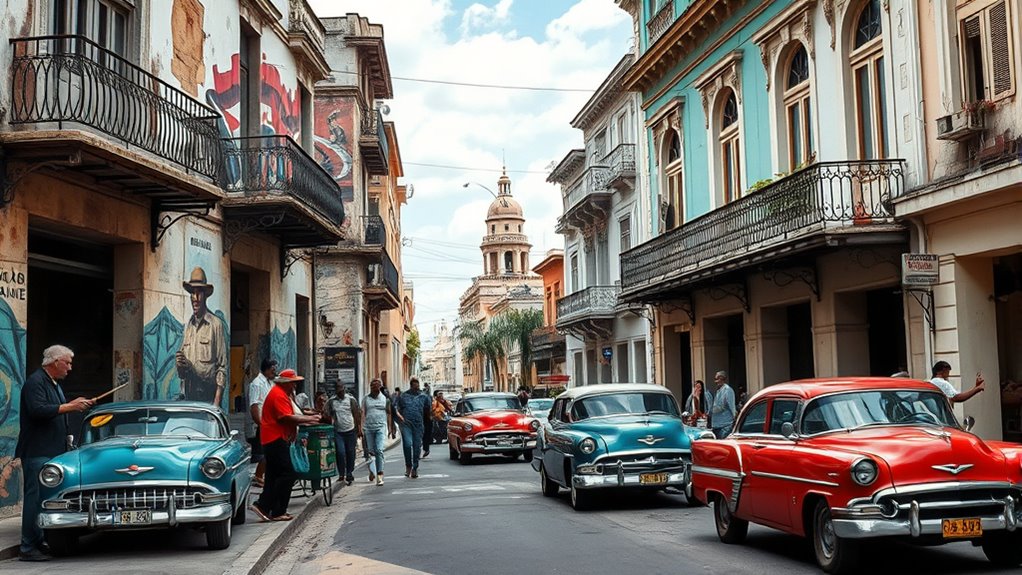
After centuries of Spanish rule and the profound influence of African slavery, Cuba’s desire for independence grew stronger. You witness early efforts in 1895, led by José Martí and Máximo Gómez, fighting Spanish control through guerrilla warfare. The Spanish response was brutal, especially with General Weyler’s concentration camps causing thousands of civilian deaths. In 1898, the U.S. intervened during the Spanish-American War, citing strategic interests. After Spain’s defeat, Cuba fell under U.S. military occupation until 1909, shaping its government and economy. Tensions remained high as Cuba struggled to establish sovereignty amid U.S. influence. These struggles for independence and control laid the groundwork for ongoing conflicts, with U.S. policies constantly influencing Cuba’s political landscape and its fight to assert true independence. Leadership skills such as strategic planning and resilience were crucial during these turbulent times.
The Revolution and Its Aftermath

What ignited the Cuban Revolution in 1959 was Fidel Castro’s daring overthrow of President Fulgencio Batista, ending decades of authoritarian rule. Once in power, you see the new government implement sweeping changes.
- Land was redistributed, with large estates limited to 1,000 acres to reduce foreign influence.
- U.S. businesses, including sugar mills and oil refineries, were nationalized, escalating tensions with the U.S.
- Political opponents faced trials, executions, and imprisonment, consolidating Castro’s control.
- The revolution also aimed to address racial discrimination, banning practices seen as unjust. The revolution shifts Cuba’s identity, forging a new path away from its colonial past and U.S. influence, shaping its modern political and social landscape.
Cold War Tensions and Diplomatic Shifts
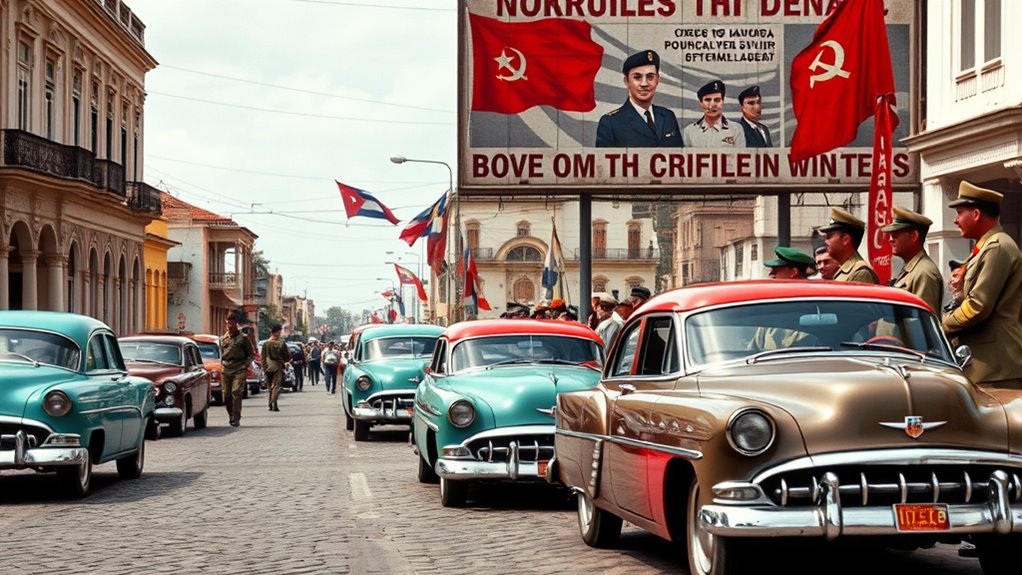
During the Cold War, Cuba became a focal point of global tension as it aligned with the Soviet Union against the United States. You witness how the 1962 Cuban Missile Crisis brought the world to the brink of nuclear war when Soviet missiles were stationed on the island. This confrontation led to a U.S. naval quarantine and intense negotiations, ending with Soviet missile withdrawal and U.S. promises not to invade Cuba. Diplomatic relations remained strained, with economic sanctions tightening over the years, especially after the 1960 U.S. embargo. Despite these tensions, Cuba maintained close ties with the Soviet Union, receiving military and economic support. The Cold War shaped Cuba’s international standing, forcing it to navigate a complex diplomatic landscape marked by hostility and cautious engagement. Additionally, the period saw the rise of digital literacy initiatives in Cuba, aimed at modernizing its communication and information dissemination strategies amidst these geopolitical challenges.
Cultural Heritage and Contemporary Society
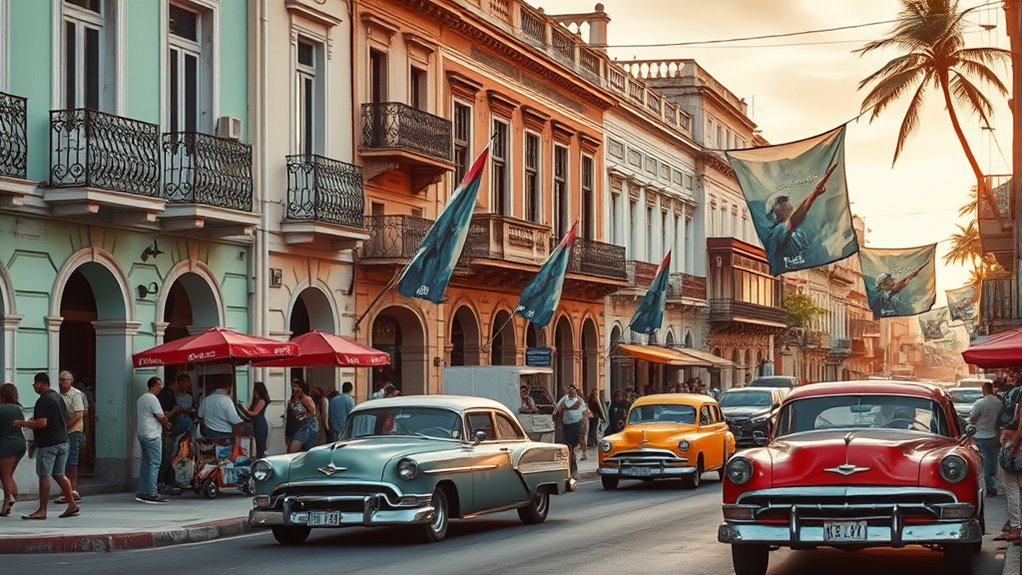
Cuba’s rich cultural heritage reflects a vibrant blend of African, Spanish, and indigenous influences that continue to shape its identity today. You’ll see this diversity in music, dance, and religious practices, which remain lively and deeply rooted in tradition. Contemporary society also emphasizes education, with Cuba boasting high literacy rates and a strong focus on community programs. Despite economic challenges, Cubans preserve their artistic expressions, from vibrant murals to literary works inspired by revolutionary ideals. You should explore these aspects:
- The enduring influence of Afro-Cuban music and dance, like salsa and rumba.
- The role of religion, blending Catholicism with African spiritual practices.
- The importance of community-centered festivals that celebrate history and cultural pride.
- The integration of cultural preservation methods into daily life helps maintain and pass down traditions amidst modern influences.
Frequently Asked Questions
How Have Indigenous Taíno Influences Persisted in Modern Cuban Culture?
You can see Taíno influences in modern Cuban culture through music, dance, and language. Many rhythms and instruments trace back to indigenous traditions, blending with African and Spanish elements. You might notice Taíno-inspired art, symbols, and place names that still resonate today. These influences help shape Cuba’s unique cultural identity, connecting you to the island’s rich indigenous heritage even amidst its diverse historical layers.
What Are Common Traditional Cuban Festivals Celebrating Cultural Heritage?
You’ll find that Cuban festivals are lively celebrations of its diverse roots. You might think they’re all about sugar and cigars, but actually, Carnival and the Havana Jazz Festival highlight African rhythms, Spanish traditions, and indigenous influences. From the colorful streets during Fiesta del Fuego to religious ceremonies like Santería celebrations, these festivals honor Cuba’s vibrant cultural tapestry—proof that even in festivities, history’s colorful threads still weave through modern life.
How Does Contemporary Cuban Music Incorporate African and Spanish Roots?
You notice that contemporary Cuban music blends African rhythms with Spanish melodies, creating vibrant and unique sounds. You’ll hear Afro-Cuban genres like son, rumba, and salsa, which feature percussion instruments like congas and bongos, reflecting African roots. Spanish influence appears in guitar melodies and lyrical styles. This fusion results in lively dance music that celebrates Cuba’s diverse cultural heritage, resonating both locally and internationally.
What Role Do Religion and Spirituality Play in Cuban Daily Life Today?
Religion and spirituality weave into your daily life like an intricate dance, blending Catholic traditions with Afro-Cuban beliefs. You might find yourself celebrating Santería rituals or attending Catholic Mass, often side by side. These practices serve as a bridge to your ancestors and community, offering comfort, identity, and resilience. They’re not just rituals but essential threads shaping your cultural fabric, guiding your spirit through life’s joys and challenges with vibrant faith and tradition.
How Has Cuban Cuisine Evolved From Its Colonial and Indigenous Origins?
You’ll notice that Cuban cuisine has evolved through a blend of indigenous, Spanish, and African influences. You’ll find traditional dishes like rice and beans, lechon, and yucca, often flavored with garlic, cumin, and citrus. Over time, international ingredients and modern cooking techniques have been incorporated, creating vibrant, diverse flavors. Today, Cuban food reflects a rich history, adapting to new tastes while preserving its cultural roots.
Conclusion
As you explore Cuba’s vibrant history, you’re like a traveler wandering through a rich tapestry woven with struggles, triumphs, and resilience. From ancient roots to modern shifts, each chapter adds a colorful brushstroke to its story. You see a land that’s like a spirited dance, blending tradition and change in perfect harmony. Embrace its soul—Cuba’s history is a fiery flame that keeps shining, inviting you to forever keep its spirit alive in your heart.

